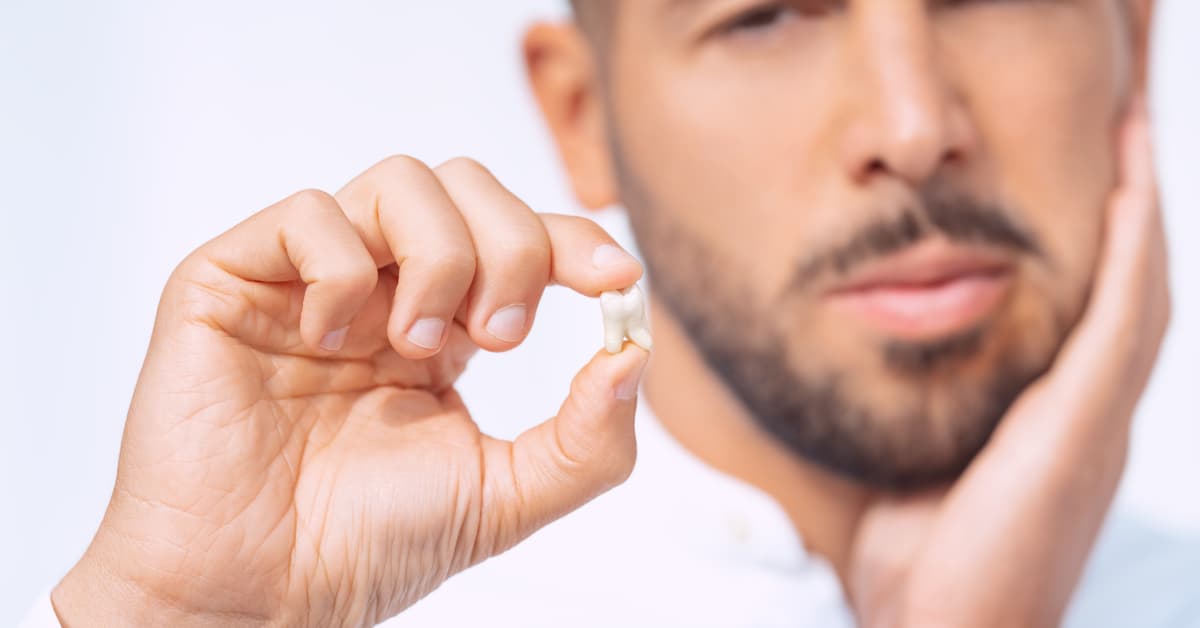Knocked-Out Tooth? Act Fast. Your 60-Minute Window Could Save Your Smile
The next 60 minutes will determine whether your knocked-out tooth can be saved or becomes a permanent loss.
As someone who’s successfully reimplanted hundreds of knocked-out teeth over two decades of emergency dentistry, I can tell you this: most tooth losses are preventable if you know exactly what to do in those critical first moments.
Your tooth is still alive right now. But every second counts.
The 60-Minute Rule That Saves Teeth
The actual 60-minute rule that dental professionals follow is supported by scientific evidence. A knocked-out tooth has approximately 60 minutes of viability outside your mouth, with Cleveland Clinic noting that “if the tooth is out of the mouth and dry for more than 60 minutes, its chance for survival decreases significantly.”
Here’s what most people get wrong: they panic, they delay, or they handle the tooth incorrectly. These mistakes turn a saveable emergency into permanent tooth loss.
Time matters. Time matters more than anything else in dental trauma.
You might think you have time to call family members, search the internet, or drive slowly to the hospital. You don’t. Every minute your tooth spends outside your mouth reduces the chance of successful reimplantation.
Your Immediate Action Checklist – Do This Now
Follow these steps exactly in this order:
Step 1: Find and Handle the Tooth Correctly
- Pick up the tooth by the crown (white part) only – never touch the root
- If dirty, rinse gently with milk or saline solution for 10 seconds maximum
- Do NOT scrub, use soap, or wrap in tissue
Step 2: Attempt Immediate Reimplantation
- Try to place the tooth back in its socket immediately
- Bite down gently on gauze or cloth to hold it in place
- If successful, call us immediately at (702) 735-2755
Step 3: Preserve the Tooth if Reimplantation Fails
- Place in milk (best option)
- Saliva works if milk unavailable – hold in your mouth next to your cheek
- Emergency tooth preservation solution if available
- Never use water or let the tooth dry out
Let me emphasize this critical point: the root surface of your tooth contains living cells called periodontal ligament fibers. These cells die within minutes when exposed to air. Proper storage in milk or saliva keeps these cells alive, making reimplantation possible.
The Science Behind Successful Tooth Reimplantation
Here’s why immediate action works: When a tooth is knocked out, the periodontal ligament – the tissue connecting your tooth to the jawbone – gets damaged but not destroyed. If the tooth is handled correctly and reimplanted quickly, these ligament fibers can reattach, essentially “gluing” your tooth back into place naturally.
Research shows reimplantation success rates are directly tied to time: teeth reimplanted within 30 minutes have success rates approaching 85-97%, while those out of the mouth for longer periods face increasingly challenging odds. If the tooth is replaced within five minutes, it’s likely to survive. Between five and 60 minutes, there continues to be a good survival rate, as long as the tooth has been stored properly. But if the tooth is out of the mouth and dry for more than 60 minutes, its chance for survival decreases significantly.
Medical literature documents successful cases even with delayed treatment – one documented case involved a maxillary central incisor successfully reimplanted after 12 hours of storage in milk, remaining functional three years later. While immediate reimplantation is always preferable, these cases demonstrate why attempting reimplantation is worthwhile even when the ideal time window has passed.
What Not to Do – Common Mistakes That Kill Teeth
These actions will destroy your tooth’s chance of survival:
- Scrubbing or cleaning the root – This removes the vital periodontal ligament cells
- Storing in water – Water causes cell death through osmotic pressure changes
- Wrapping in dry gauze or tissue – Dehydration kills the root surface cells
- Using hydrogen peroxide or alcohol – These chemicals are toxic to living tissue
- Waiting to see if pain develops – Dead teeth don’t hurt, but they can’t be saved
- Going to a hospital emergency room first – They can’t reimplant teeth and waste precious time
While general emergency rooms handle many medical crises excellently, dental trauma requires specialized knowledge and equipment they simply don’t have.
Why Minutes Matter More Than You Think
When you understand that the cellular death process begins immediately upon tooth avulsion, that dehydration causes irreversible damage to periodontal ligament fibers within 15 minutes of air exposure, and that successful reimplantation depends entirely on preserving these microscopic connections between tooth and bone, you realize why emergency dental care can’t wait.
This isn’t just about saving a tooth – it’s about preventing years of complications. A lost front tooth affects your speech, your confidence, your ability to eat normally. Replacement options like implants or bridges cost thousands more than emergency reimplantation and never feel quite like your natural tooth.
How Emergency Dental Imaging Saves Your Tooth and Protects Your Health
Your mouth is the gateway to your body. When we reimplant your knocked-out tooth, advanced dental imaging doesn’t just ensure proper placement – it protects your overall health by detecting trauma-related complications that could affect your entire system.
Here’s why emergency imaging is crucial for knocked-out teeth: Dental trauma often causes hidden fractures in surrounding teeth, jawbone damage, or root injuries that aren’t visible to the naked eye. These hidden problems can lead to infections that spread systemically, affecting heart health, immune function, and overall wellness.
Our emergency imaging protocol reveals critical information that saves both your tooth and your health:
- Digital X-rays – Detect hidden root fractures, bone damage, and proper reimplantation positioning in seconds
- 3D CBCT scans – Provide precise views of jawbone integrity and surrounding tooth stability
- Intraoral cameras – Document soft tissue trauma and track healing progress
- Digital impressions – Create baseline records for monitoring long-term success
According to published research, a 28-year-old patient who experienced dental trauma required emergency 3D imaging that revealed a hairline fracture in an adjacent tooth and minor jawbone displacement that wasn’t visible during clinical examination. This type of thorough assessment helps prevent complications that could develop weeks or months later.
Emergency dental imaging serves multiple protective functions: it ensures your reimplanted tooth is positioned correctly for optimal blood flow and nerve regeneration, it detects associated injuries that could compromise healing, it establishes baseline records for insurance coverage, and it identifies any systemic health risks that trauma may have triggered.
The Comprehensive Dental Care Emergency Advantage
When you call our emergency line, you get immediate phone guidance, after-hours availability, specialized trauma equipment, advanced diagnostic imaging, experienced emergency protocols, precise reimplantation techniques, and the expertise that comes from handling hundreds of dental emergencies successfully.
You might wonder if imaging takes too much time during a dental emergency. Our digital systems provide instant results that actually speed treatment by ensuring we position your tooth perfectly the first time, preventing complications that would require additional visits.
Picture walking out of our office tonight with your natural tooth back where it belongs, confirmed perfectly positioned by advanced imaging. Imagine explaining to your family how quick thinking, expert emergency care, and precise imaging technology saved your smile. Envision avoiding months of complex reconstruction procedures while protecting your overall health.
Special Considerations for Different Age Groups
Children’s knocked-out baby teeth should never be reimplanted – this can damage the developing permanent tooth underneath. However, permanent teeth in children actually have higher success rates for reimplantation because young tissues heal more effectively.
For adults over 40, reimplantation success depends more heavily on the time factor and proper handling. The periodontal ligament becomes less regenerative with age, making that 60-minute window even more critical.
When to Call Comprehensive Dental Care Emergency Services
Don’t wait for regular office hours. Don’t assume the damage isn’t serious because there’s no pain. Don’t think you can sleep on it and decide tomorrow.
Call (702) 735-2755 immediately if:
- Any permanent tooth has been completely knocked out
- A tooth is loose or partially displaced
- There’s severe dental pain following trauma
- Bleeding from the mouth won’t stop after 20 minutes
- You suspect jaw fracture or other facial injuries
You’ll preserve your natural smile, avoid complex replacement procedures, and potentially save thousands in reconstruction costs.
Your Emergency Action Plan Right Now
Remember the critical steps: handle the tooth by the crown only, rinse briefly if dirty, attempt immediate reimplantation, store properly in milk if that fails, and get to emergency dental care within 60 minutes. Every detail matters because your natural tooth is irreplaceable.
The difference between saving and losing a knocked-out tooth often comes down to what you do in the first five minutes.
Don’t let a moment of trauma become a lifetime of regret. When dental emergencies happen in Henderson or Las Vegas, Comprehensive Dental Care is ready 24/7 to save your smile.
Dr. Gregg Hendrickson has successfully reimplanted hundreds of knocked-out teeth during his 20+ years of emergency dentistry. At Comprehensive Dental Care, we provide immediate emergency services that can mean the difference between saving and losing your natural teeth.



